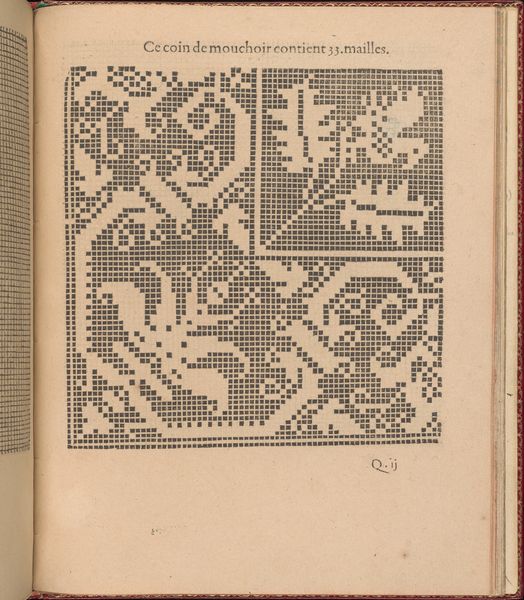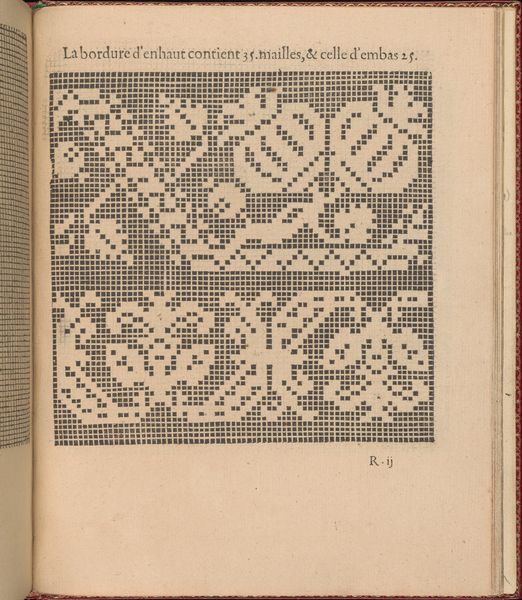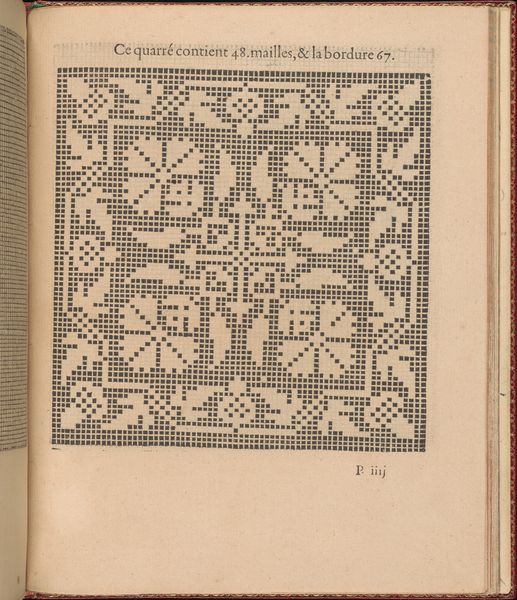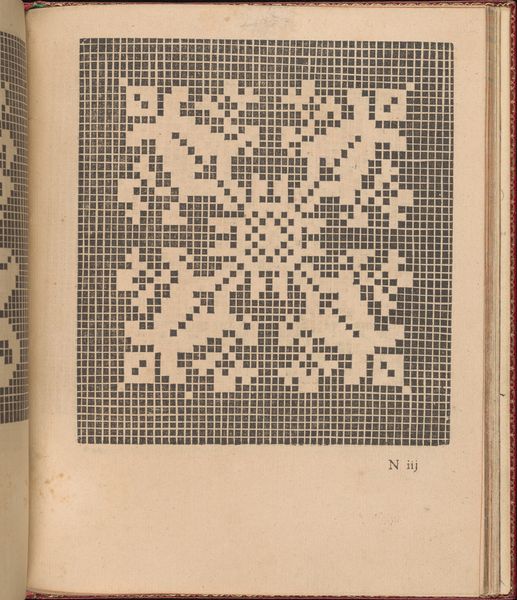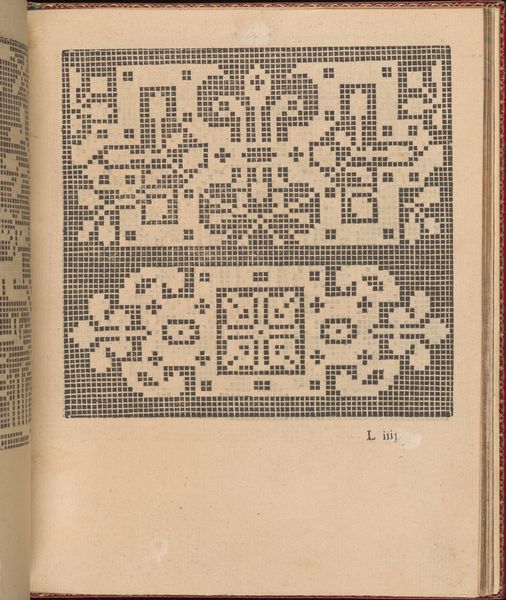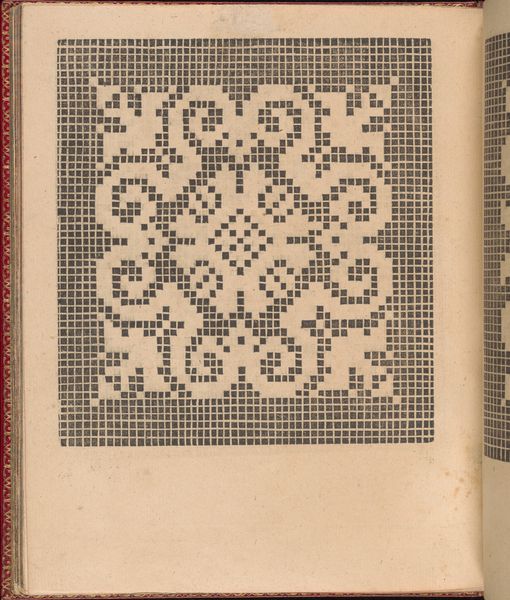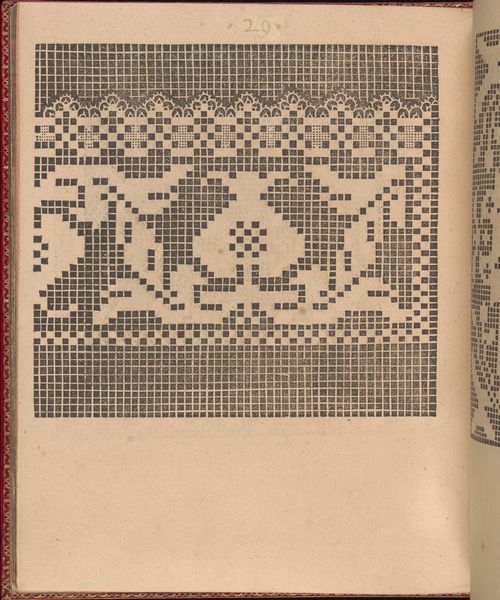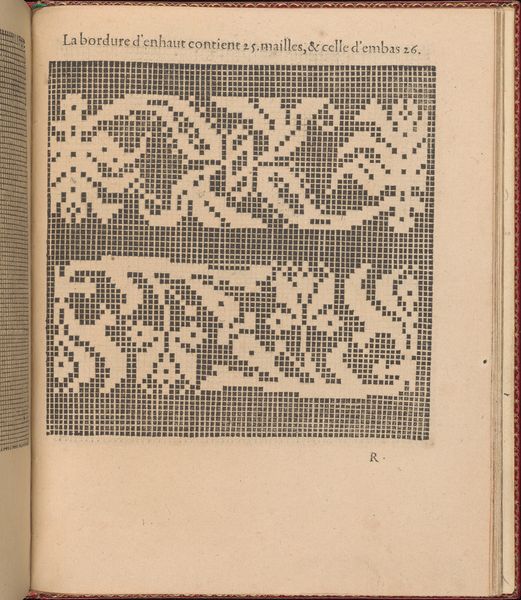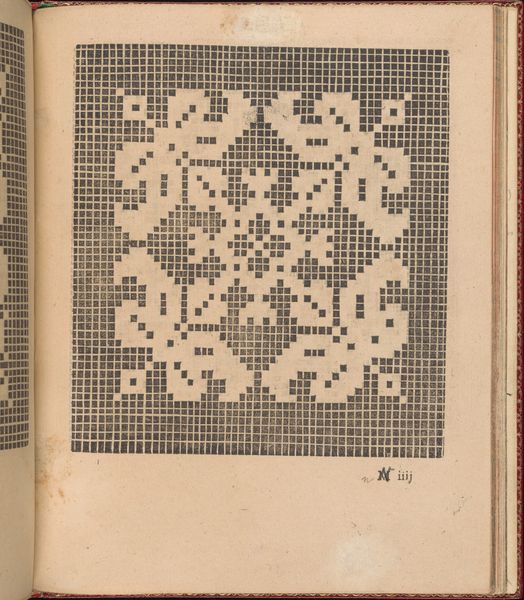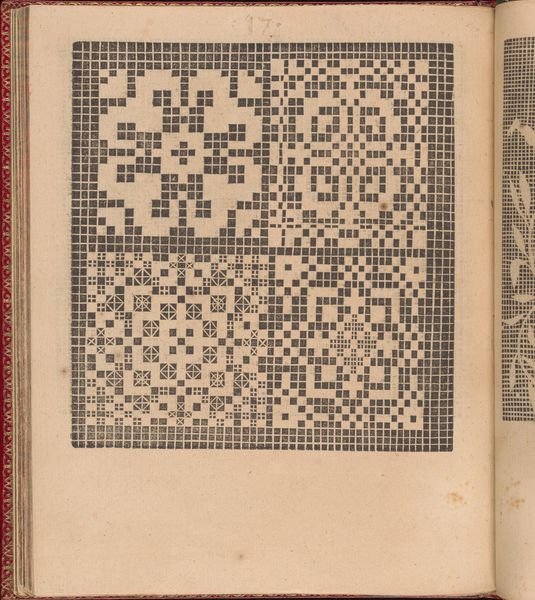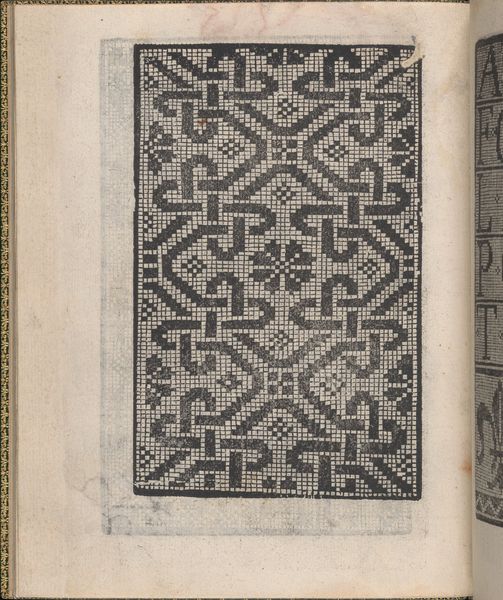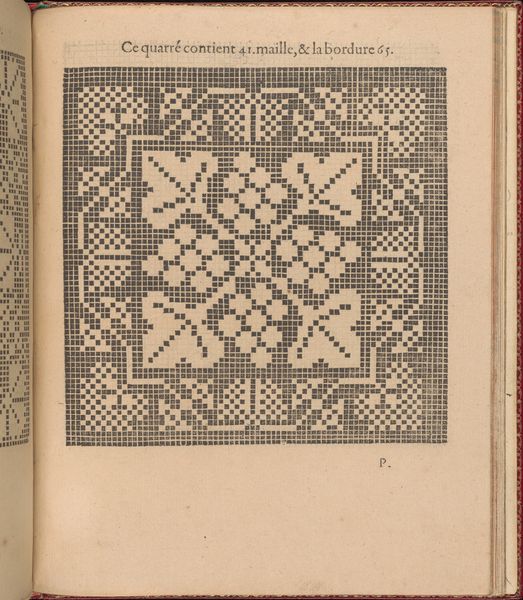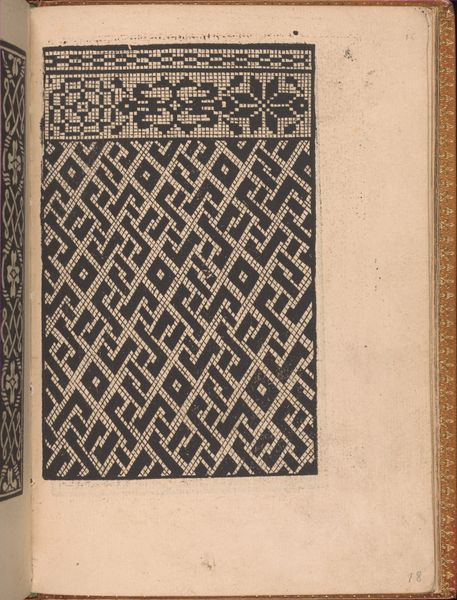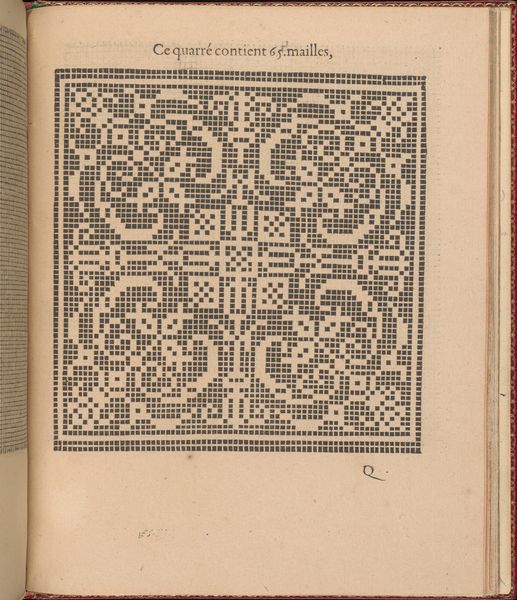
Les Singuliers et Nouveaux Portraicts... page 56 (recto) 1588
0:00
0:00
print, engraving
# print
#
linocut print
#
geometric
#
pen work
#
engraving
Dimensions: Overall: 8 1/16 x 6 5/16 in. (20.5 x 16 cm)
Copyright: Public Domain
Curator: This engraving, "Les Singuliers et Nouveaux Portraicts... page 56 (recto)" dating back to 1588, showcases Federico de Vinciolo's contribution to pattern design during the Renaissance. Its current home is the Metropolitan Museum of Art. Editor: It's captivating, almost hypnotic in its repetition. At first glance, the geometric shapes feel rigid, but there's also a flowing quality in the interwoven lines, a dance between order and fluidity. Curator: Vinciolo's designs were highly influential in their time, offering artisans templates for embroidery and lacework. The meticulous grid system, the building block of these designs, was not just aesthetically driven; it provided a practical structure for translating the image into textiles. The dissemination of these patterns really democratized design, making sophisticated motifs accessible. Editor: Yes, accessible, but let’s consider access through a lens of power. Who had the means to engage with such designs? How did these patterns perhaps reinforce existing hierarchies through the materials chosen, the labor involved? We can think of the socio-economics around the pattern. Curator: Absolutely, it prompts these questions about social and material constraints. Beyond its utilitarian function, the intricate pattern acts as a cultural artifact that signifies the aesthetics and values of the Renaissance era. What seems simple is layered with complexity when we dig a bit. Editor: I appreciate that tension. Seeing the artwork digitized brings its own layers. There's the original intention and use as design source, and then its status as object of art, existing now in this virtual space— perhaps losing and gaining meaning. How might makers use these Renaissance patterns to critique contemporary ideas? Curator: It certainly can prompt that sort of cultural reflection and response. I am struck by its lasting relevance through centuries and the dialogue between craft and societal power. Editor: Indeed, it’s a striking reminder of how designs, even those seemingly purely aesthetic, are always deeply entangled within social structures.
Comments
No comments
Be the first to comment and join the conversation on the ultimate creative platform.
